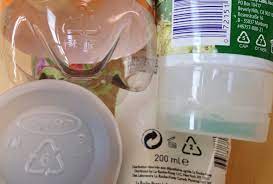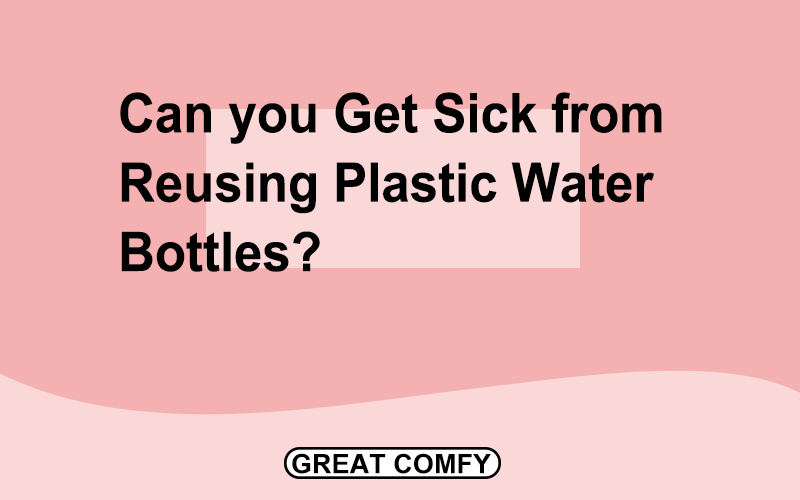Are you someone who often finds themselves refilling that same plastic water bottle over and over again? We’ve all done it ¨C perhaps you’re trying to be eco-friendly, or maybe you just have a favorite bottle that feels just right in your hand.
You might wonder, though, ¡°Is it safe? Can I actually get sick from them?¡±
Can you Get Sick from Reusing Plastic Water Bottle?
Well, first, let’s address a common misconception: simply refilling your plastic water bottle isn’t necessarily a one-way ticket to illness-ville or even cancer, as we’ve heard from people. It’s not that straightforward.
The reality is a bit more nuanced.
Firstly, what can actually cause issues are the little microbes, that hang out on surfaces we touch regularly.

For instance, do you know how you need to wash your coffee mug regularly to prevent a build-up of bacteria (or dirty, in essence)? The same principle applies to water bottles.
If you’re constantly refilling your water bottle without giving it a good clean, bacteria can accumulate. These bacteria might originate from your mouth or hands, or from the environment.
Read also: Is it Generally safe to Reuse Plastics?
This is because water bottles are usually difficult to clean. And if the little dirt in them stays up for an extended period of time, it could lead to the sprung of little microorganisms.
While most of these bacteria are unlikely to make a healthy person sick, they can still cause problems for people with compromised immune systems. This is why it’s important to be aware of how many times you reuse your plastic.
Secondly, the type of plastic used in the water bottle can also make a difference.
While it’s not typically the plastic itself making you sick, certain types of plastic can degrade over time, especially with repeated washing or exposure to heat. This can lead to plastic leaching chemicals into the water, which isn’t ideal.
So, while it’s not a direct ¡°Yes, you’ll definitely get sick,¡± there’s a bit of risk involved. It mostly comes down to hygiene and the specific circumstances in which the bottle is used and stored.
The key takeaway? Keep it clean! Regularly wash your bottle, and don’t leave it in a hot car or a damp gym bag.
What types of Plastics are best safe for reusing?
When you flip your plastic water bottle over, you’ll likely find a little triangle with a number in the middle.

This isn’t just an interesting design choice; it’s a plastic identification code, and it’s your guide to the type of plastic you’re dealing with.
Generally, here’s a table you want to be looking at for the best plastics for reusing¡
| Plastic ID Code | Name | Safety for Reuse |
|---|---|---|
| #1 | PET or PETE (Polyethylene Terephthalate) | Not recommended for reuse due to potential chemical leaching and bacterial growth. |
| #2 | HDPE (High-Density Polyethylene) | Safe for reuse. It is durable and resistant to breaking down. |
| #4 | LDPE (Low-Density Polyethylene) | Safe for reuse. Typically found in flexible bottles, it’s resistant to breaking down. |
| #5 | PP (Polypropylene) | Safe for reuse. It is heat resistant and tough, commonly used in reusable containers and bottles. |
| #7 | Various, including some polycarbonates | Mixed. While many are safe, some may contain BPA unless labeled BPA-free. |
For water bottles, you’re probably looking at plastic #1, also known as PET or PETE (polyethylene terephthalate). They’re light, clear, and seemingly perfect for that crisp, refreshing water.
However, there’s a catch: while PET is considered safe for single use, it may not stand up to reuse. It can harbor bacteria and also break down over time, possibly releasing chemicals.
Generally, we can say they’re not good for reusing.
So what plastics are good for reusing?
If you’re on the hunt for a reusable water bottle, look for ones made of plastic #2 (HDPE, or high-density polyethylene), plastic #4 (LDPE, or low-density polyethylene), or plastic #5 (PP, or polypropylene).
These plastics are generally more durable and resistant to breaking down, which makes them better for reusing.
Plastic #7 is another one you might come across, and it’s a bit of a mixed bag.
This category includes a variety of plastic types, including some that are made from multiple types of plastic.
While many are safe, this group also includes polycarbonates that may contain BPA, a chemical you may want to avoid. So, unless the bottle explicitly says it’s BPA-free, it might be better to opt for another type.
Better Alternatives to Plastics for Water Bottles
The first on our list here is stainless steel bottles.

These have become incredibly popular over the past few years, and for good reason.
They’re sturdy, long-lasting, and generally don’t give any funky taste to your water, unlike some plastic bottles. Plus, they’re great at keeping your drinks cold ¨C or hot, if that’s your thing. A simple rinse at the end of the day, and you’re good to go again!
Next, there are glass water bottles.

Some people love them because they can offer the purest taste. There’s a certain charm to drinking from a glass bottle, isn’t there?
Of course, they’re a bit more fragile than their steel counterparts, but many come with silicone sleeves to help protect against those occasional oops moments.
A word of caution though, they might not be the best pick for, say, a vigorous hike or a high-intensity gym session.
You could also try bottles made from silicone. They’re flexible, durable, and light, making them super portable. Also, silicone is generally safe for food and drink storage, but as always, make sure any bottle you choose is marked as BPA-free.
Final Thoughts
While the risk isn’t necessarily high, there are potential health issues that can arise from reusing plastic water bottles. So it seems like a good idea to regularly clean your water bottle, try to keep it out of the heat, and replace it when it starts to look worn.




